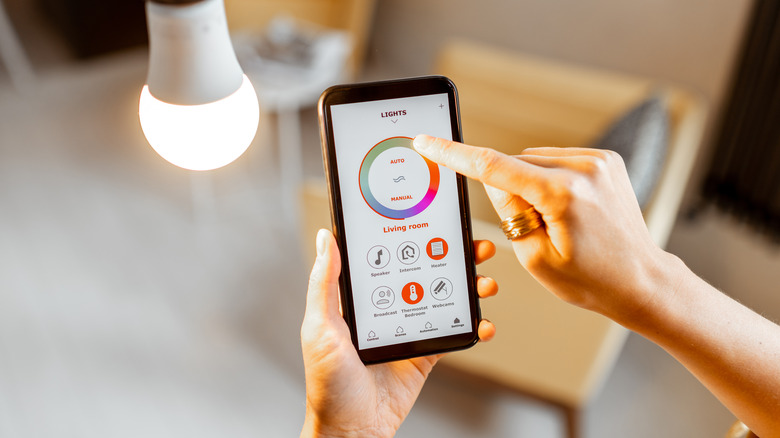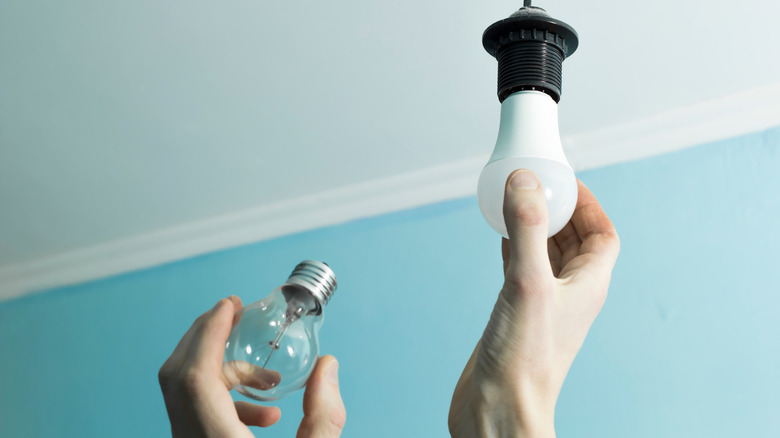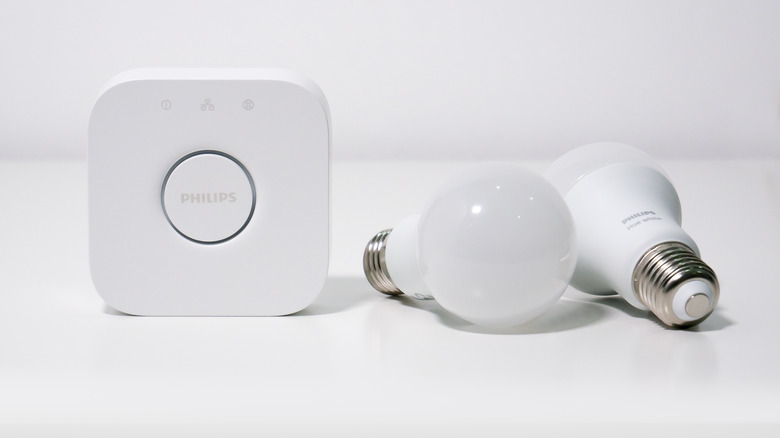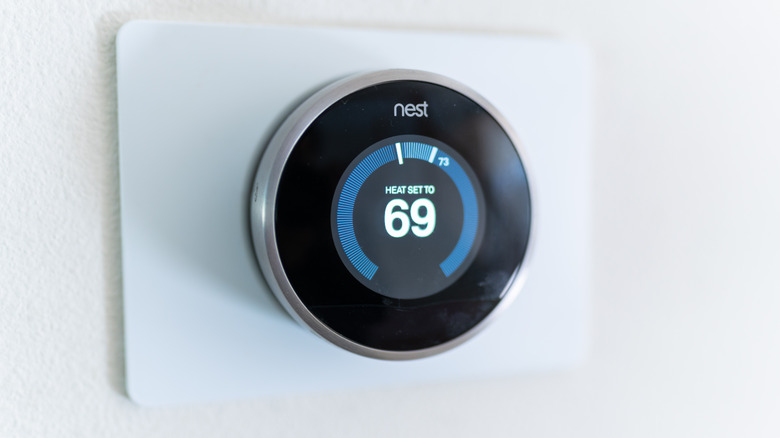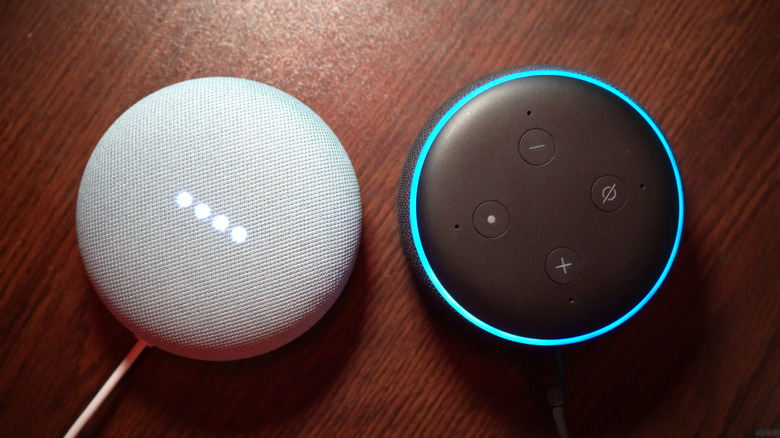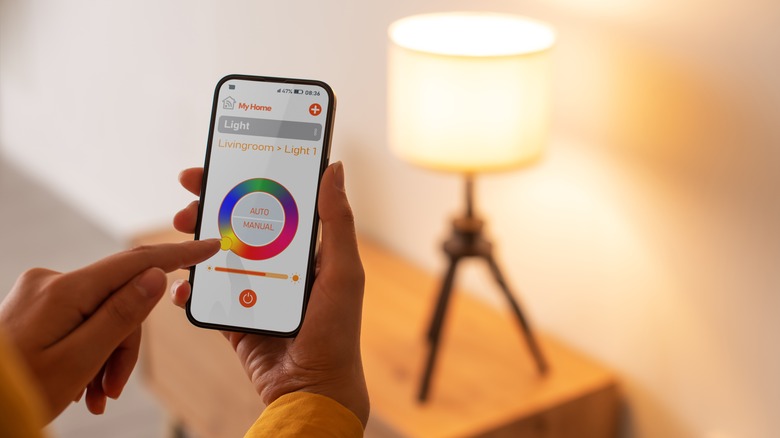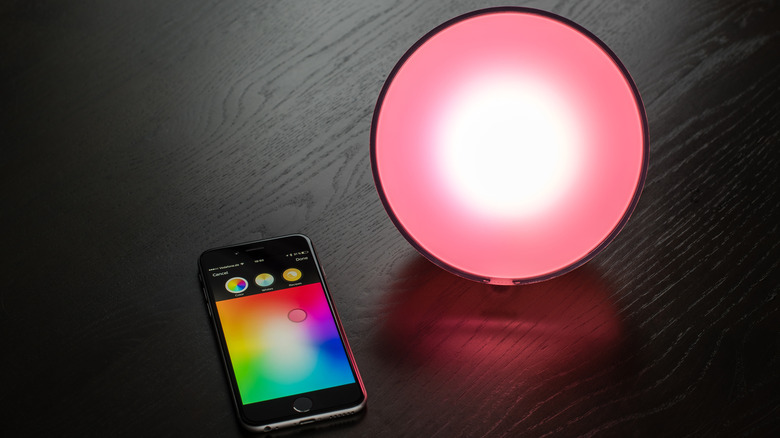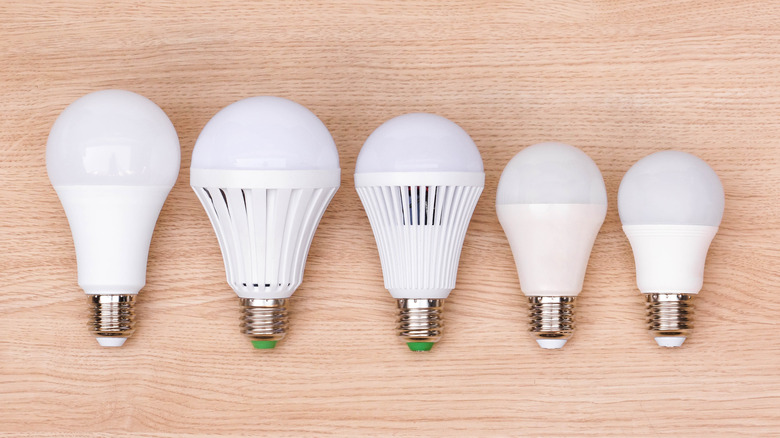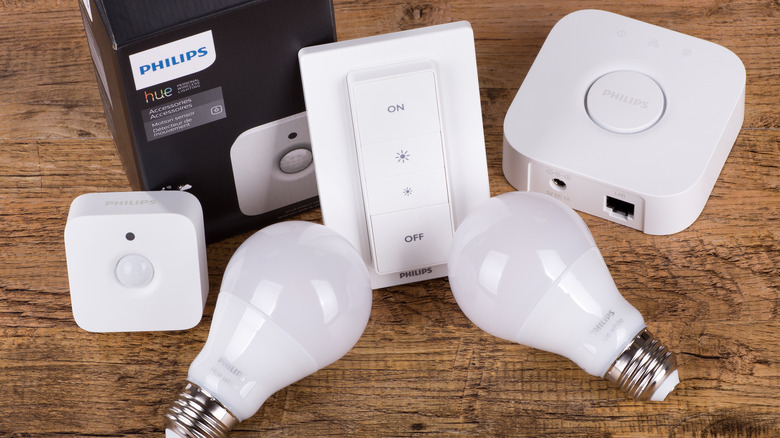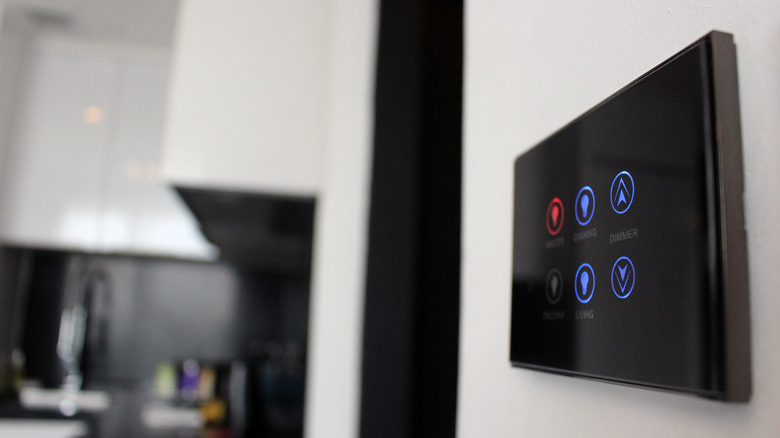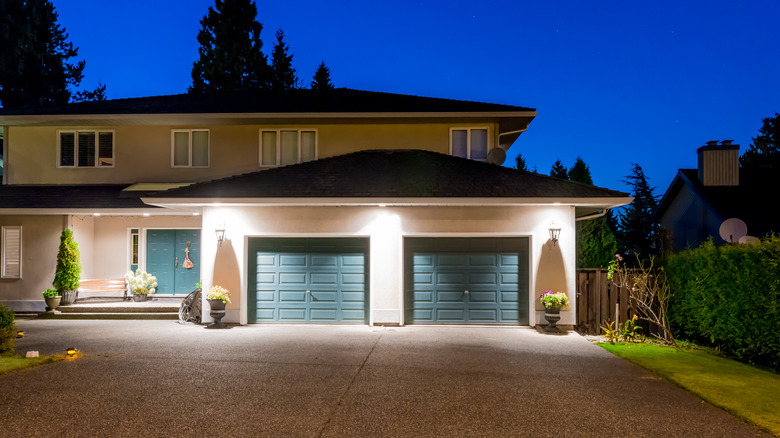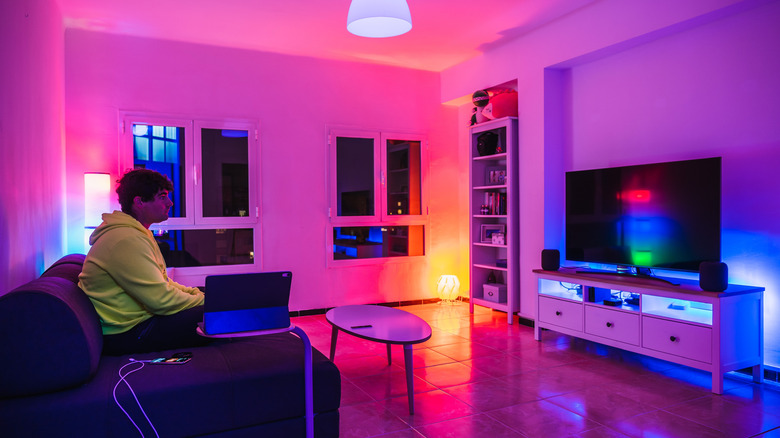Everything You Should Know About Smart Bulbs Before Buying Them
Upgrading to smart bulbs is one of the easiest entry points to creating a home full of smart devices and enjoying the convenience of automation. Over the past decade, homeowners have been making the switch from incandescent bulbs to LED bulbs. With the smart bulb's increasing popularity, it seems we're in the midst of another major market shift.
Swapping out your regular bulbs for smart bulbs can help you save money on electricity (so long as they're LED bulbs), and afford you the conveniences never before available with standard bulbs. Smart lights shine in personalized schedules, as mood lighting at a party, or in creating a more immersive experience while playing a game or watching a movie. You can even link smart lights with motion sensors so you never have to flip a switch again. If given the chance to perform to their full potential, smart bulbs can be a game changer in your daily routines.
Most smart bulbs use LED technology
If you've made the upgrade from traditional bulbs to LED bulbs, you know just how much better they are. Although LED bulbs are more expensive than traditional, or incandescent, light bulbs, the extra cost is worth it. LED bulbs are power-efficient, bright, long-lasting, and don't generate nearly as much heat as traditional bulbs.
The vast majority of smart bulbs are equipped with the latest LED technology to help save you money and energy. It's important to note that the opposite is not always true. In short, not all LED bulbs are smart bulbs, but most smart bulbs are LED bulbs.
The biggest difference between a plain old LED bulb and a smart bulb is built-in internet and/or Bluetooth capabilities. Smart bulbs are able to carry out their "smart" functions by connecting to your home's Wi-Fi network or your phone via Bluetooth. The ways that a smart bulb can — or has to — connect to your home's Wi-Fi network and/or phone can vary, but connecting is a crucial step to accessing all of the extra convenience smart bulbs can offer you.
Some smart bulbs require a hub, and others just need Wi-Fi
Smart TVs, for example, can turn on and even play some local content, but you won't be able to stream anything from Netflix or YouTube until you connect the TV to your Wi-Fi network. Smart bulbs are similar because they'll still function like regular light bulbs without connecting, but you won't be able to access and customize their cool features until you connect them.
Some smart bulbs make the process incredibly easy. You buy the bulbs, download their mobile app, and follow the in-app steps for the setup process. One of these steps will inevitably include you selecting your Wi-Fi network and entering your password to give the bulbs access to your internet. After this, you're set! For smart bulbs that don't require a separate hub, you can often control everything you need from the mobile app, like brightness, color, and schedules.
Unfortunately, some smart bulbs require separate purchase of a hub device to properly function. While there can be pros to going the smart hub route, it's still frustrating if you miss this bit of info when you make your order. A smart home hub is usually a piece of hardware that controls all of your home's smart devices. This makes it easy to control everything from one place — typically one app — but it can be an unexpected piece of the puzzle for the uninitiated.
There are also a select few smart bulbs that are able to deliver smart functionality without Wi-Fi, connecting to your phone directly using Bluetooth. Options like the Illumi Bluetooth Smart Light Bulb, bulbs in the Philips Hue Bluetooth collection, and select bulbs from Sengled connect to your phone — or a hub, then your phone — without requiring any connection to Wi-Fi.
Not all smart devices are compatible with one another
If you have other smart devices in your home, you'll want to make sure they're compatible with the smart bulbs you're looking to buy. Despite items being "smart," they don't always work seamlessly in one ecosystem together.
Some smart home ecosystems are only compatible with one specific virtual assistant, and others only work with other products within the same brand. Even though a smart bulb is a fairly simple techy item, it still has some tricky intricacies to navigate. Sometimes, companies are more interested in making money than making things simple for consumers.
Imagine that you're trying to create a morning routine that'll automate many of your daily tasks. Your routine might involve turning your smart bulbs on, playing your wake-up playlist on a Bluetooth speaker, starting your coffee maker remotely, and turning the thermostat to a higher or lower temperature — depending on the season — before you leave for work. In order for all of those devices to work together in a single routine, they have to be compatible with a single home ecosystem.
The three most common smart ecosystem brands are Amazon Alexa, Google Home, and Apple HomeKit. Most people usually select an ecosystem based on the smartphone they own or smart devices that are already in the home. One isn't necessarily better than the other; each one has both pros and cons.
Not all virtual assistants are supported on every smart bulb
If you already have a favorite smart home ecosystem — Apple HomeKit, Google Home, or Amazon Alexa — then you're likely used to verifying virtual assistant support for every new smart device you buy. But if you're new to owning smart devices and don't really have a go-to virtual assistant yet, here's a brief overview.
Apple HomeKit is a great option for iPhone or macOS users because it's easy to seamlessly link everything. However, Apple HomeKit currently has the least variety among smart home devices, so your choices will be limited — and often proprietary. Google Home works well for Android users and those who already own Google products, like the Nest line. Then, Alexa has quite a few compatible devices because Amazon makes it super easy for developers to integrate support for Alexa into their products, making it easy for iPhone or Android users to find smart products that fit into their chosen ecosystem.
Some existing smart ecosystems have been around for a while — like Samsung SmartThings or Yonomi's IoT integration platform — but haven't gained as much popularity as the options from Amazon, Google, or Apple. For Samsung, this is because SmartThings was initially reserved for Samsung products only. New smart ecosystems are also bound to be developed as new features are thought of and the demand for smart products grows even more. There's no single standard that covers the majority of smart home products, so you have to be careful and check every smart product.
Check out a smart bulb's app prior to purchasing
You'd have to really search to find a smart bulb that doesn't have an app, but not all apps are created equally. Check out the ratings and reviews for a smart bulb app prior to making a decision to see if it's a good brand. If you see multiple negative ratings, then you know you can cross a brand off your list without wasting a ton of time researching.
Or, if you want to see the app in action rather than trust reviews from other people, download the app! Some smart bulbs require you to create an account and pair one of their products with it before they will let you do anything else, but some apps don't! Sometimes, you can poke around in an app without ever creating an app to get a feel for the user interface, available features, and overall ease of use.
It's also worth noting that some smart bulbs don't work at all with any of the virtual assistants mentioned previously. If you don't see anything noting support for virtual assistants on the product's page, you'll likely only be able to control the smart bulbs via the app. In this case, it's doubly important to make sure the app is a good one!
You can often customize colors and brightness
One of the best features of smart bulbs is the ability to customize how they look — and therefore, how your room looks. You can often change the bulb's color, which is awesome for holiday or birthday parties. Then, you can also change the brightness or warmth of the color of the bulb to reflect a certain mood.
As an example, these White and Color Ambiance smart bulbs from Philips Hue have 16 million different colors to flip between, as well as a white ambiance range of 50,000 shades of warm and cool light. Whether you're throwing a Halloween party or creating the perfect mood lighting for a quiet night of reading, you have plenty of options.
Not all smart bulbs are capable of switching between different colors or shades. So if you want to be able to customize your bulb's color or brightness, you'll need to make sure it's capable before making a purchase. If you know you only want to use white light with your smart bulb, you can often get bulbs with a larger range of white ambiance shades at a lower price.
Smart bulbs come in multiple shapes and sizes
When people think about investing in smart bulbs for their home, they often only think of the most common A19 bulb with an E26 base, but you can get a smart bulb in pretty much any shape or size you need. Whether you need a small bulb for your bathroom or ceiling fan or a huge bulb to replace the floodlights in your backyard.
All light bulbs — incandescent, LED, and smart — are identified by a combination of a unique letter and number, called a light bulb code. The code starts with a letter (or letters), which indicates the shape or special feature of the bulb. Then, the number that follows the letter(s) represents the bulb's diameter in eighths-of-an-inch.
A-shaped bulbs are the standard choice for households, so it's the one people are most familiar with. But there are also B-shaped bulbs, often used in chandeliers and wall sconces, and Parabolic Aluminized Reflector (PAR) bulbs, the most common choice for floodlights and spotlights.
So if you're looking to replace a certain bulb in your home that doesn't like a standard A19 bulb, try unscrewing it and trying to find a letter/number combo written on it. Then, plug in that letter/number combo and "smart bulb" into your shopping site of choice, and start filtering through all your options!
You can make your smart bulbs even smarter
Smart bulbs are truly a cool and convenient invention. But by adding motion sensors or smart switches to your home as well, you can make your smart bulbs more efficient.
As the name implies, a motion sensor senses motion, then activates a secondary function, like turning lights on. A smart switch replaces your existing light switch, and can then be turned on and off remotely via an app or virtual assistant. Smart switches can be used in place of or in addition to smart bulbs.
Some motion sensors, like the Indoor Motion Sensor from Philips Hue, only work with smart bulbs of the same brand and a hub. So if you liked the look and features of Philips Hue's motion sensor, you'd need to plan on buying Philips Hue smart bulbs and the Hue Bridge hub as well. Luckily, there are also motion sensors that work with most smart bulbs, like this Motion Sensor from WiZ. You can buy smart bulbs from WiZ, but if you already have other smart bulbs in your home or your cart, there's no need to swap them out.
Philips Hue also has a few smart switch options, but you'd be required to buy the Hue Bridge hub in order for them to work. But there are plenty of other great smart switch brands out there that don't require you to buy anything other than smart switches. Replacing all of your light switches rather than your light bulbs can be a more affordable option, so it's worth comparing the two before jumping in.
Control the lights in your entire home
When people buy smart bulbs, they often buy them for a specific room, like the living room or the bedroom. But smart bulbs can go anywhere and everywhere in your home. Then, you can group certain lights together and control them all from a single app no matter where you are in the home. So if you just got in bed and realized you left a light on in the living room, all you have to do is give a simple voice command or turn the light off from your phone.
If there are certain areas of your home where you can't imagine ever needing a colored bulb, investing in white smart bulbs instead will save you a ton of money. Do you think you'll need colored lights in the kitchen or the bathroom? Chances are, probably not.
Controlling all the lights in your home could also come in handy if you need to get up in the middle of the night for a glass of water. Instead of trying to get around with your smartphone's flashlight, you could turn on the lights you need at a low intensity before you even get out of bed.
Use smart bulbs in schedules and routines
One of the best reasons to buy smart bulbs is that you can incorporate them into your daily schedules and routines. In addition to daily schedules and routines, you can also create a randomized schedule while you're away on vacation to make it look like someone's home and hopefully deter anyone from breaking in.
However, smart bulbs truly shine in their everyday use. One of the best ways to wake yourself up in the morning is by turning the lights on, but with a traditional light bulb, you have to physically get out of bed to do that. You can make your smart lights turn on — gradually if you want — at a certain time in the morning to help you wake up. It's like having your own personal assistant nudging you awake in the morning.
You can also build your smart bulbs into daily schedules. For example, if you know you always leave the house at the same time every morning, you can schedule all your lights to turn off at that time. Then, you never have to worry about wasting energy all day if you forget to turn the light off. Or, if you get off work pretty late and don't want to walk into a dark house, you can schedule your lights to turn on right before you get home.
Smart bulbs are practical, but have plenty of fun features
There are some incredibly useful ways to incorporate smart bulbs into your daily life. It's an investment you can easily label as practical. But depending on which particular one you buy, there are a ton of other fun things you can do with smart bulbs.
If you buy a color smart bulb with built-in RGB capability, you can change the color of your lights at any given time. Most people know about this feature. But did you know some smart bulbs can also sync with a Bluetooth speaker? Then, while the song is playing, you'll see a corresponding light show that makes parties — or a dancing party of one — a lot more fun.
Similarly, if you have a Bluetooth soundbar, you can sync your lights with a movie or television show you're streaming for a more immersive experience. Or, you can set your lights to match the weather outside. Whether it's raining, snowing, or shining outside, your inside lights will create a mood profile that fits perfectly.
You can also set your lights to blink or change colors if you get a notification on your smartphone. For some, this might be annoying. But if you're the type who gets distracted with your phone in the room while you're working or doing homework, you can leave it in another room, turn on Do Not Disturb and only let emergency notifications come through, and not have to worry unless you see your room lights blinking.
